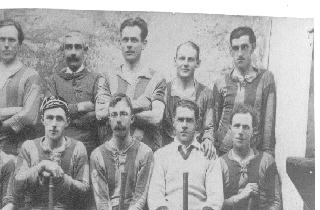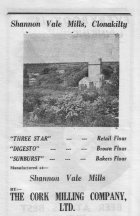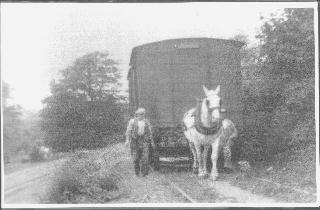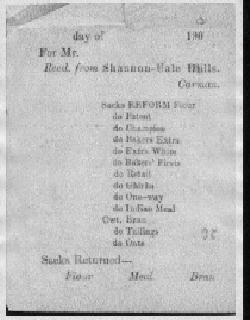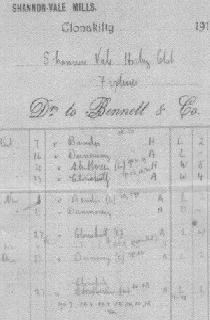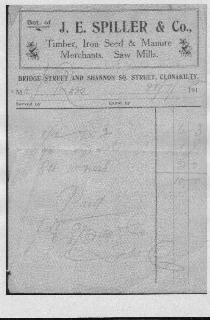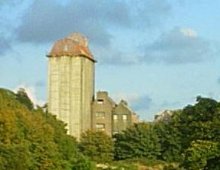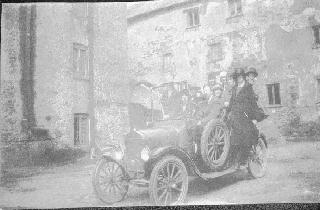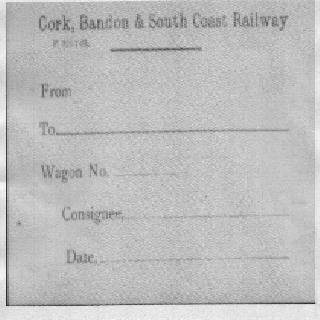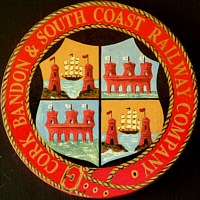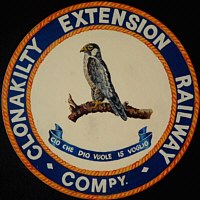|
"The valley
tucked away from main roads envelopes the village dominated by it's
great mill……Stretching along the river was a meadow, which
the first Earl of Shannon had designated as a bleaching green in 1780
and it is still known as the Bleach. Behind it an austere golden coloured
Georgian House rose out of the trees. Snowdrops covered the grass in
front and the stems of daffodils were forming buds in the mild January
sun" To improve the conditions for bleaching the coarse linen and yarn woven and spun around the countryside, a Public Bleaching Green was formed near the present site of Shannon Vale mill, in 1780, under the auspices of Richard, Earl of Shannon, who acquired about 25 acres of land with a house, two miles north of Clonakilty. (Townland of Grillagh) The field to the right of the entrance road to the mill is still known as "The Bleach". The property passed through
different hands and in 1788, Robert Pratt, built a flour-mill, on account
of the plentiful supply of water from the Argideen river. In addition
to this, a later proprietor, James Sadleir (1799) carried on an extensive
cotton business. James, who lived in Shannon Vale House, imported machinery
from Manchester and built cottages for his labourers. James married
Joanne Forster and their son George Forster Sadleir (a British army
officer) was the first European to cross the Arabian Desert, from east
to west in 1819. (George became Sheriff of Cork in 1837.) James and Thomas Allen purchased the mill in 1823 and in 1826 built a new mill and sank a new tailrace, trebling the water power. At that time flour was exported from Ireland and about 8,000 sacks were sent from Shannon Vale out of Ring Pier, Clonakilty. At least one ship with a cargo of flour from Clonakilty, didn't complete her journry. The Speedwell, sank near Ballycotton, in January 1830 - no lives were lost. On 23rd March 1836 a sailing
vessel,Lord Berehaven, with a cargo of 324 bags of wheat from
Bantry for James & Thos.Allen Shannon Vale, went aground on the
sandbank on Inchydoney Island. Her captain Charles Murphy disregarded
the advice of the local pilot, Cornelius Hart and steered for the Island
side of the channel into Ring pier Clonakilty. Things didn't always run smoothly
at the mill either and records show that on Sunday night, 20th December,
1846, during the height of The Great Famine, the mill suffered extensive
damage by fire. The following notice appeared in the Cork Examiner,
on Monday, 21st December, 1846: The Census of Population (1851)
for the townland of Grillagh gives some idea of the effects of the Famine
in the area. In 1848 the Allens sold the mill to Dr. Horace Newman Townshend Meade and in 1852 it passed to Thomas Bennett, who remodelled it and changed from the old mill stones to a gradual reduction system by rolls. In 1890 the railway line connecting
the mill to the Clonakilty main line was laid down. The line was gravity
worked in the direction of the mill and the laden wagons were horse
drawn to the main line. (The only other horse drawn system known in
Ireland was at Clark's Linen Mill, Upperlands, Co. Derry.) Three generations of the Bennett
family carried on the milling business in Shannon Vale: Thomas Bennett,
Joseph Bennett and Thomas-Joseph Bennett. The following brands of flour,were
manufactured and sold. The business was sold to the
Cork Milling Company in 1935. This company completely remodelled the
mill and in 1937, erected a new Silo and installed a drying plant. Every effort was made to persuade
the owners and the Government, to keep the mill in operation, by T.D.'s
, Clonakilty U.D.C. and several other organisations,but to no avail.
Shannon Vale Mill was one the main sources of employment for the surrounding
area. On 26th March 1958, in Dáil Éireann, Michael Pat Murphy,Labour Party, T.D. for Cork South West, asked the Minister for Industry and Commerce, Sean Lemass, if the Rank organisation proposed to transfer it's milling quota of 29,759 barrels of wheat from Shannon Vale to it's Cork city operation, as fifteen permanent jobs were lost in Shannon Vale due to the closing of a substantial part of the business and it was feared that the company intended to close the mill. After the mill closed, M.P.
Murphy T.D. again questioned the then Minister for Industry and Commerce,
Jack Lynch, The quota system was set up
in 1933 to keep small mills going and each mill was required to mill
not less than 90% of it's quota. The idea was that this quota could
not be transferred to another mill thus jeopardising employment in a
particular area. (There were exceptions to the rule, where mills were
in close proximity and where employment would not be jeopardised by
doing so) The building today is a sad reflection of it's former glory, but not past restoration by any means. The use of the mill as a rearing unit for fowl has not done it any good and the modern rearing unit adjacent to it could be off-putting to any would be developer. |
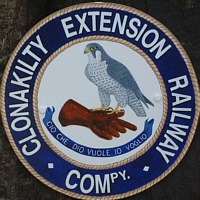 Clonakilty Extension Railway Logo
|

